
Recyclogy of Wharf (SFCV) 都市公共空間規劃:漁人碼頭回收系統新設計(舊金山觀光局)
The idea is to construct a garbage system for tourists and pedestrians which can also function as the city's branding strategy. By cooperating with a reward system, people would be more likely to throw their garbage into the trash bin. The design incorporates the city’s garbage policy of separating trash into three categories.
Public Space Redesign : Recyclogy of Wharf (SFCV)
都市公共空間規劃:
漁人碼頭回收系統新設計
(舊金山觀光局)
The design will function as a garbage collector and also as an interactive entertainment, which can inform and educate tourists about correct garbage disposal. The design can both bring a unique experience to tourists and maintain the cleanliness of Fisherman's Wharf. Through constructing a new pattern of waste disposal movement, San Francisco can be branded as an environmentally-conscious city by attracting more tourists because of the cleaner environment and encouraging the visitors to participate in a specific activity that enhances San Francisco’s values.

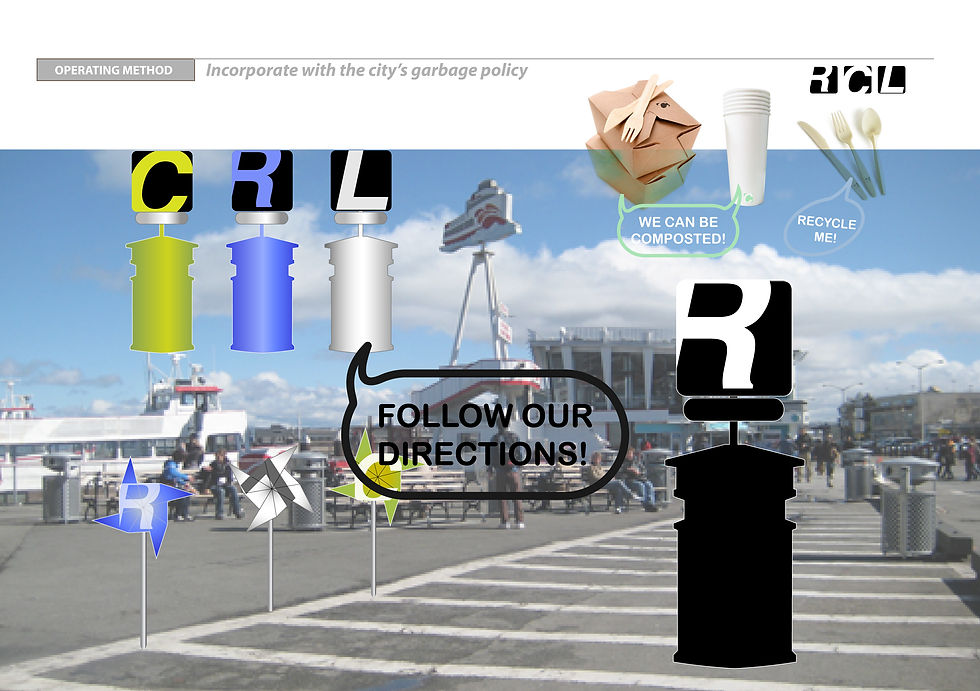


The Current Problem in Fisherman's Wharf
The taxes generated from tourism decreased 19.2% from 2009 to 2010. This also affects small local business. Tourists all gather in Fisherman's Wharf, however, and the overcrowded tourist population creates a dirty environment because of a massive waste problem which, in turn, causes a bad impression of the city’s branding.Boring garbage containers are basic, but not as functional as an effective environment improver. This also makes Fisherman's Wharf no different from its competitors.

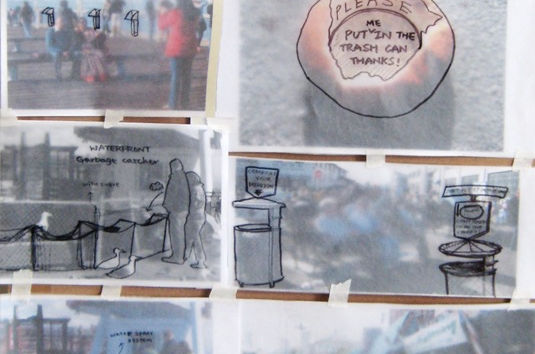
Primary research in Pier 43 ½
Observing four groups of people and recording their behaviors and reactions: Tourists are satisfied by the food, but they don't know what to do with their huge leftovers and believe the birds need some dessert. A lot of people are feeding sea birds and many takeout containers are is tossed on the ground. As the tourists mimic each other when they no longer want to carry around their leftovers. Every tourist who can't finish the bread, feed the bird. After tourists are gone, they leave plenty of bread on the ground, which attracts more birds who come and fight for food. The birds drag the bread everywhere and cause traffic jams, horrible views and a dirty environment. Locals and pedestrians see this scene and refuse to come to this area, and forming the social conflict between locals and tourists.
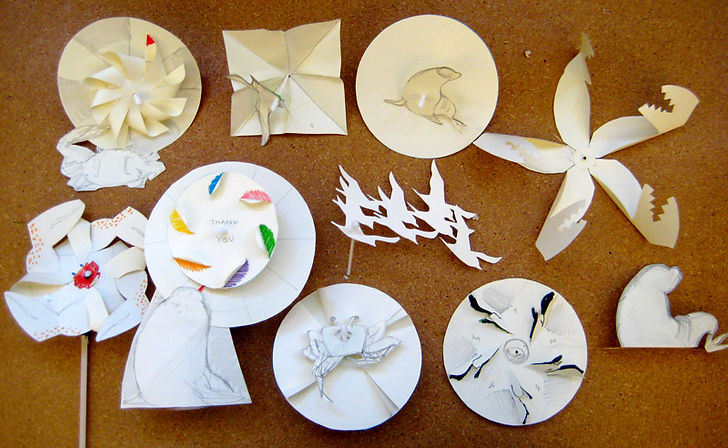
Prototype Testing , Street Interviews
From my previous prototype interview, tourists prefer to get free coupons as a reward, especially food, parking, museum, and Cable Car ride coupons. Once tourists participate in the garbage reward system, they will be happy get their coupon and feel great for their actions, then head to stores to exchange their rewards, this system would be more likely to benefitting local business because tourists would shop, eat and explore more during their trips.

Prototype Testing , Try out the concepts
By researching the existing entertainment activities in the market in order to understand tourists' preferences and needs. Through building quick prototypes in the projected environment, the testing process can lead me to refine the design and figure out the best operation method. I also test with different materials, colors, information, and interview pedestrians and tourists to see how details affect people's cognition and what form works the best. After finishing the first model, Pier 43 ½ is the location for the case and installing a set of the design signage models on top of the public garbage bins. I then document and observe tourists' and pedestrians' reactions and suggestions as a way to communicate with those who utilize the design and then refine the interface, form, and function based on their feedback.


Refine and Incorporate with the Current City Policy
Eating is one of the top 10 activities for tourists in Fisherman's Wharf. Tourists usually take food with them and walk around the waterfront to enjoy the Bay’s ambiance and atmosphere. The unique trash sorting icons on food packages could show people how to separate different kinds of garbage and match their icons with the signs on trash bins.
The pinwheels identity
the system also includes the pinwheels designs that are printed on the three categories' icons and set around the waterfront. The iconic pinwheel can announce the garbage sorting reward system and attract tourists to the trash can in order to sort their garbage and get free coupons. The pinwheel image can be the city’s identity of being a green city and can match with the Bay's windy environment. Tourists would follow the system and toss their waste into the right trash receptacles and get their prizes.






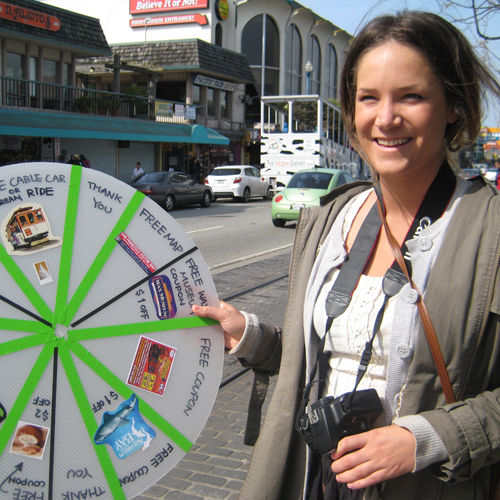






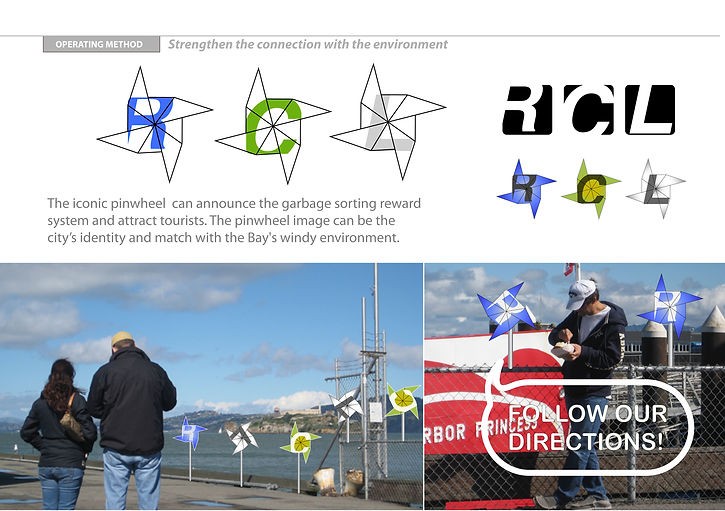
The functional requirements
The vending disc attaches on the garbage signage and runs as a reward system. The coupon generator function is similar to a vender machine. When people put their garbage into the bin, the weight sensor on the bottom of the bin will detect its weight change and stick out a free coupon. The signage boards will fit with the size of the existing public trash cans and become an additional attachment on the current bins, in order not to increase the cost unnecessarily. The signage on the garbage can is 18 x 18 inches and 3 inches thick, The total height of the garbage signage is 6 feet for informing pedestrians from a distance.
Product performance/value
The new design has more charm and is more unique than the existing garbage containers because it expresses the city's value and lifestyles. Its influences are wider, stronger, and more positive, compared to the current option, which is only a passive waste collector. This waste disposal system is able to indirectly modify the present tourist industry, which only sells images and hedonism to tourists because it relates and motivates tourists to participate in the city’s healthy, ecologically-friendly culture.








